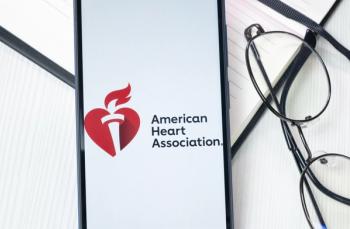
Study expands data on global RSV burden
For the first time, investigators broke down into narrow age bands morbidity and mortality estimates for respiratory syncytial virus (RSV).
A new study1 finds that RSV is responsible for one in every 50 deaths in children up to aged 60 months and for one in every 28 deaths in children up to aged 6 months. For every in-hospital death associated with RSV acute lower respiratory infection, about 3 deaths in the community are attributable to RSV.
In an earlier review, the authors analyzed RSV data for 2015, which this new study updates. Noting that since 2017 new data on the RSV burden in young children have become available, investigators conducted a systematic literature review of studies published between 2017 and the end of 2020 that reported RSV-associated acute lower respiratory infection morbidity and mortality estimates in children up to aged 60 months in 2019 or earlier (before the COVID-19 pandemic began). They based their findings on a total of 481 studies: 317 included in the earlier review plus 113 additional studies and unpublished data from 51 investigations.
Data analysis determined that RSV is associated with considerable morbidity and mortality globally in children up to aged 60 months, especially during the first 6 months of life and in low-income and middle-income countries (LMICs). Specifically, about 33 million RSV-associated acute lower respiratory infection episodes were recorded globally in children aged 0 to 60 months in 2019; one in 5 of these episodes was in infants up to aged 6 months. Whereas incidence of RSV-associated acute lower respiratory infection peaked in children aged 0 to 3 months in LMICs, this peak was in children aged 3 to 6 months in upper-middle-income and high-income countries. But children in LMICs across both age groups accounted for more than 95% of reported RSV-associated acute lower respiratory infections and more than 97% of RSV-attributable deaths. Country-level estimates revealed considerable differences in the RSV-associated acute lower respiratory infection rate among LMICs, ranging from 40.3 per 1,000 children a year in China to 83.4 per 1,000 children in Eswatini.
Hospitalization data for RSVs also differed between LMICs and better-off countries.An estimated 3.6 million hospital admissions were associated with RSV acute lower respiratory infection globally in children from aged 0 to 60 in 2019, of which about 1.4 million (39%) were in infants aged 0 to 6 months. But the proportion of patients admitted to hospitals for this diagnosis was larger in higher-income countries than in LMICs, both for children aged 0 to 60 months (29% vs 23%-26%) and those aged 0 to 6 months (50% vs 32%-33%). The authors note that this gap between hospital admissions in LMICs and higher-income countries reflects the still limited access and availability to hospital care in LMICs.
The authors found that in children aged 0 to 60 months there were a total of 26,300 related in-hospital deaths in 2019. In infants aged 0 to 6 months, there were 6.6 million RSV-associated acute lower respiratory infection episodes and 1.4 million hospital admissions related to this diagnosis, along with 13,300 in-hospital deaths.
“With many RSV prophylactic products in the pipeline, our estimates by narrower age bands provide important baseline information to the introduction, prioritization, and evaluation of these products,” the authors commented. In addition, they noted that their findings suggest that programs “targeting protection during the first 6 months of life could have a substantial effect on reducing RSV disease burden, although more data are needed to understand the implications of the potential age shifts in peak RSV burden to older age when these are implemented.”
Reference:
Li Y, Wang X, Blau DM, et al. Global, regional, and national disease burden estimates of acute lower respiratory infections due to respiratory syncytial virus in children younger than 5 years in 2019: a systematic analysis. Lancet. 2022;399(10340):2047-2064. doi:10.1016/S0140-6736(22)00478-0
Newsletter
Access practical, evidence-based guidance to support better care for our youngest patients. Join our email list for the latest clinical updates.








